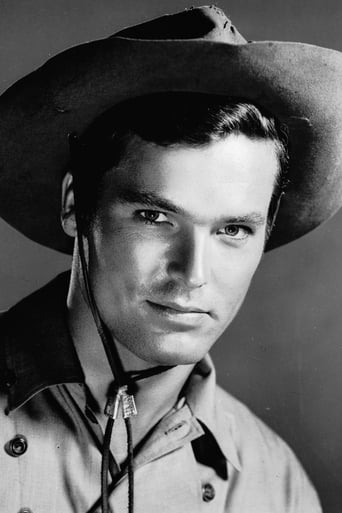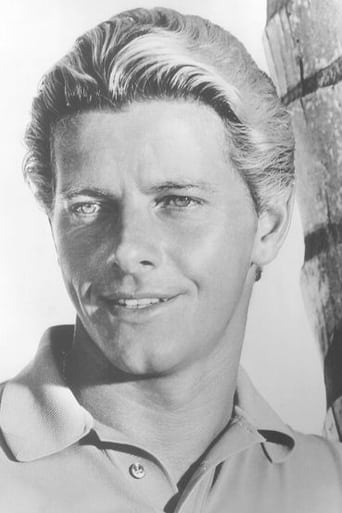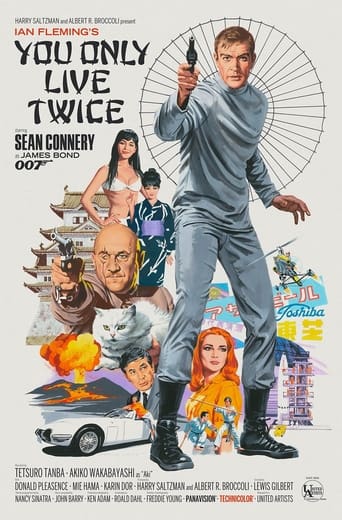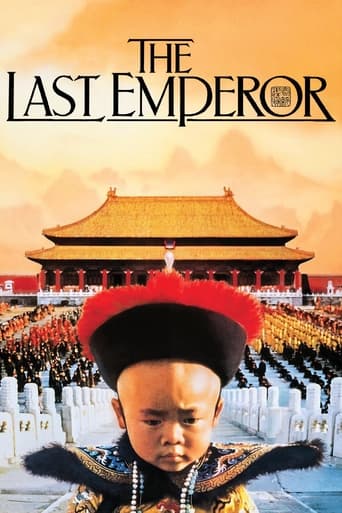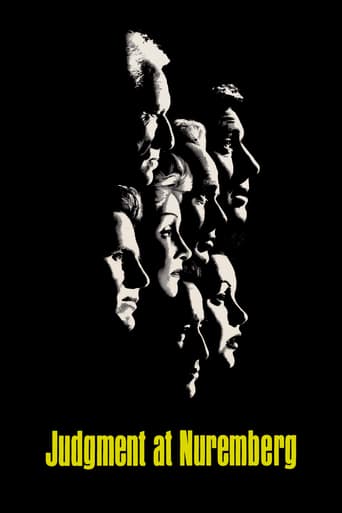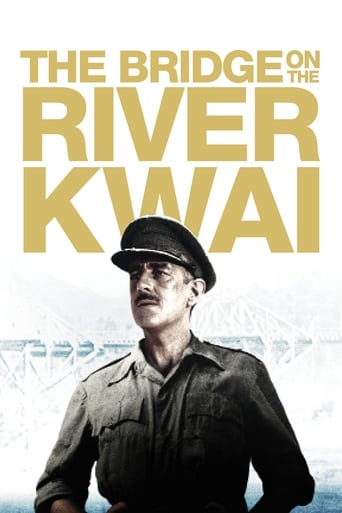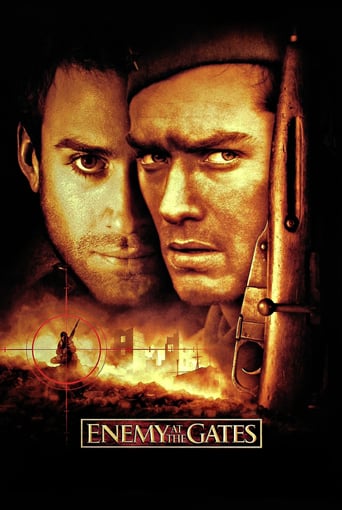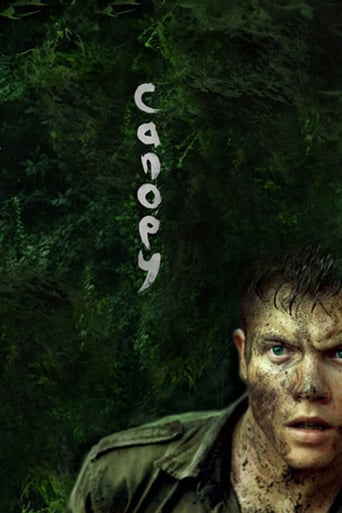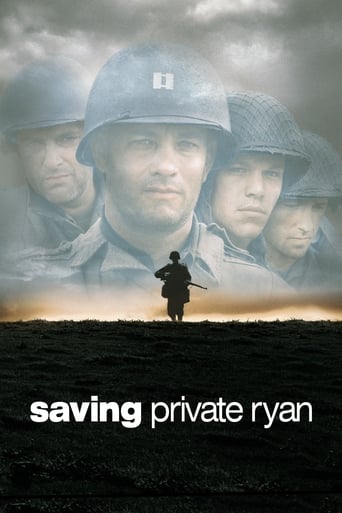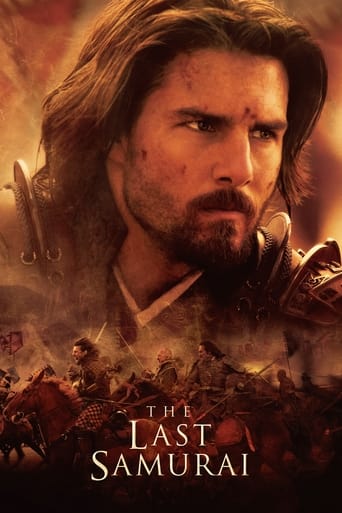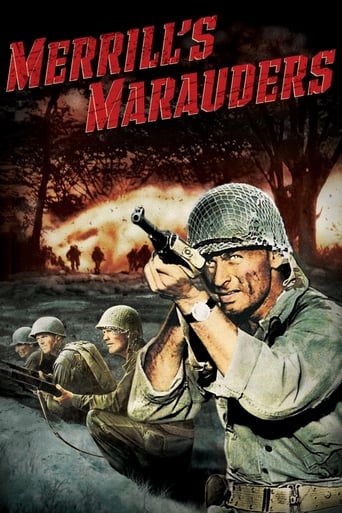
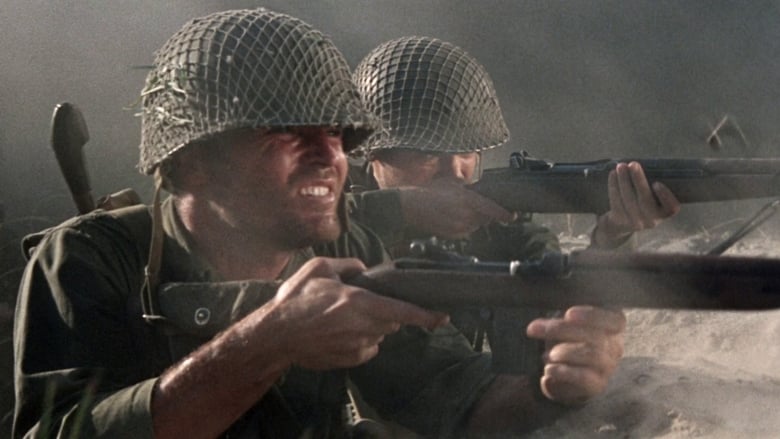
Merrill's Marauders (1962)
Brigadier General Frank D. Merrill leads the 3,000 American volunteers of his 5307th Composite Unit (Provisional), aka "Merrill's Marauders", behind Japanese lines across Burma to Myitkyina, pushing beyond their limits and fighting pitched battles at every strong-point.
Watch Trailer
Cast
Similar titles
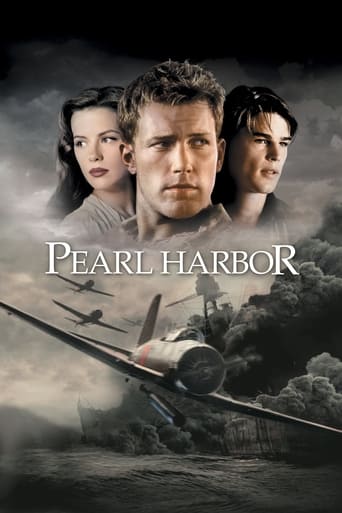
Reviews
It's no definitive masterpiece but it's damn close.
what a terribly boring film. I'm sorry but this is absolutely not deserving of best picture and will be forgotten quickly. Entertaining and engaging cinema? No. Nothing performances with flat faces and mistaking silence for subtlety.
I didn’t really have many expectations going into the movie (good or bad), but I actually really enjoyed it. I really liked the characters and the banter between them.
All of these films share one commonality, that being a kind of emotional center that humanizes a cast of monsters.
Sam Fuller had combat experience and always wanted a more gritty portrayal of war which had little to do with jingoism but plenty to do with the human toll of fighting a battle.Merrill's Marauders has no big stars but several character actors such as Claude Akins. It also uses stock footage from other war films to keep it economical even though location filming took place in the Philippines.The film is based on a non fiction book, The Marauders written by a soldier who served on the missions in Burma. To help the British troops who themselves are exhausted after many years fighting the Japanese in Burma. General Merrill and his soldiers first objective is to take the town of Walawbum. Tired from jungle warfare, some of the soldiers suffering from fatigue or disease Merrill and his men are ordered in no uncertain terms on another objective, to take the strategic airstrip at Myitkyina. Even though the men seem to be in no fit condition to march further up the jungle and take part in more combat, General Merrill has to reluctantly get them to follow orders.Although Fuller was a war veteran because of a low budget and censorship the combat scenes are rather uninteresting and bloodless. In fact some of the acting of the soldiers falling down is rather flaky and should had been better staged.Where the film is good at are the smaller scenes that make more of an impression. Weary soldiers collapsing as other watch and continue to march or climb. The man who refuses to let his donkey get shot. At a Burmese village a boy gives Claude Akins some food who breaks down from such an act of kindness.Fuller would continue with the theme of warfare many years later in 'The Big Red One.' This is a mixed bag, lacking in tension, poor battle sequences but has it some fine character moments.
Sam Fuller's "Merrill's Marauders" (1962) is a realistic account of U.S. Army soldiers fighting the Japanese in the jungles of Burma during World War II. Starring Jeff Chandler as General Frank Merrill, the movie captures the sheer exhaustion of these men as they battle typhoid, malaria, and the perils of jungle warfare under the worst conditions possible. Along for the ride are plenty of stock players from the Warner Brothers roster of the early 1960s including Will Hutchins, Peter Brown and Ty Hardin. Claude Akins also has a prominent role in the cast as does Andrew Duggan as the unit's top M.D. Pushing his men to the extreme, Merrill is soon scorned as a "butcher." What they don't know is that the General is practically dead on his feet himself. Obsessed with completing his mission and following his superior's orders, Merrill finally collapses in a heap. In the final reel, his men march by his outstretched body to go off and fight another brutal battle. Duggan mouths off some unnecessary patriotic nonsense at the end while cradling the stricken General in his arms. Luckily, it doesn't detract from the overall proceedings.Director Sam Fuller, a combat soldier from World War II himself, knows something about war and he instills enough realism in this film for viewers to feel the jungle sweat on their own faces. He later went on to make a movie about his own unit (1980's "The Big Red One"), but this film certainly ranks with his best work. The real Frank Merrill survived the war but died from a heart attack in the mid-1950s. Jeff Chandler didn't last long after this movie either, succumbing to a botched operation at the age of 42.
The best way to understand a man's emotions are to look into his eyes. What does the look on his face tell you about his mood? Sam Fuller knows that. This is a movie about the faces of ordinary men in battle. What brings them joy, what makes them angry, what fatigues them. Fuller, a former soldier himself, knows how to convey these emotions in a way few filmmakers ever have been able to.In 1944, "Merrill's Marauders", a group of American volunteers, trekked across Burma to destroy several key Japanese bases. There was a legitimate fear that the Japanese would trek through Burma to India and link up with Hitler's forces in Europe. The Marauders played an important part in stopping this link-up, at great cost to their own lives.The movie makes us understand what it must have been like to be a soldier in World War II. It's important to realize that the Marauders were expecting a reprieve very early on the campaign, and were pushed far beyond normal physical and mental limitations to complete their mission. Merrill (brilliantly portrayed by Jeff Chandler) has a heart condition himself, but keeps it a secret from his men, who come to loathe him until he collapses from a stroke, and they realize he has been pushing himself just as hard, if not harder than, his own troops.Just what causes the stress they endure? First, the death of their friends. Lt. Stockton (Ty Hardin, in one of his best performances) expresses frustration at having to write letters home to the families of the dead in his platoon. Gradually, the number of families he must write to increases. The men left under his command are trudging through several hundred miles of swamp, fearing detection by the enemy at any given moment. They are without sufficient food, infected with malaria and typhus, and lack enough medical supplies. Then have to fight off or meticulously avoid every enemy unit they encounter. By the end of the film, every man we saw at the start with a clean shirt and freshly shaven face is either dead, or wearing tattered clothes, unkempt hair and most likely wounded or exhausted from disease. These are normal men who miss their homes and families, and want to go home badly they don't let the audience forget that, because it's almost all they talk about and rightly so.Although some of the battle scenes seem sanitized compared to post 1965-standards (the usual fake-looking "seizure" death scenes, bloodless hand-to-hand combat), the aftermath is shockingly realistic and haunting. There is one scene in which Lt. Stockton slowly walks across a maze of concrete tank-traps, where a pitched close-quarters battle has just been fought, and sees and endless tangled mass of bodies both American and Japanese.Fuller lets his camera linger on these moments. There is one scene where Merrill gives an order to his subordinate and Fuller keeps the camera on the officer's shocked and disappointed face for just long enough to let us start thinking about what is going inside the nameless man's head. Likewise, he makes the Philippine locations come to vivid life, especially the dark, confined sequence in the swamp. Only a few scenes set in pine forests near the end of the film look jarringly out-of-place."Merrill's Marauders" only weakness is in its almost forced jingoistic patriotism. The opening scene, a montage of documentary footage narrated by Andrew Duggan, sets us up for a flag-waving movie about American heroes single-handedly wiping out the Japanese Empire without effort, as has been seen in countless other war films. Likewise, the film's conclusion speaks of the heroism and dedication of the Marauders as if they and the entire U.S. military were immortal saints. These segments seemed tacked on, and I would bet in a minute that the military, who aided in production of the film, required that these scenes be included. Oh, yeah, and the ridiculous music score does not help much, either.Am I patriotic? Yes. Do I support the American military? Of course. Who makes a war movie web site in order to cut down war movies? I love 'em. The body of the film is about ordinary fighting men and their dedication to each other. Not to a cause. I'm sure that when men were in the trenches together during WWII (and any other war, for that matter) their primary dedication was to their buddy next to them, not for a glorious cause.I have a soft spot in my heart because Frank Merrill was my grandmother's cousin. So I have a bit of a tie to him and the history he and his men made, I suppose. That bit of prejudice doesn't change the fact that this is a great movie, and deserves a DVD release A.S.A.P.
It's too bad this great cast and interesting subject matter were squandered in this cliché-ridden, cheaply made production. The music is awful, except the bits they stole from "Objective Burma". The Phillipine Army, standing in for the Japanese, look way too modern and American with their equipment and uniforms. And from the look of it, the movie was filmed entirely in the Phillipines, which do not look like I imagine Burma to be.Jeff Chandler is fine as Merrill, but the script is pretty limiting. It's a shame this was his last film.Ironically, "Objective Burma", filmed entirely in California, has a much richer jungle feel than this movie. It's clear from reading about Burma that you need a machete to move about in the jungle and you see that in "Objective Burma". The Philipine terrain in "Merrill's Marauders" is much too open.


